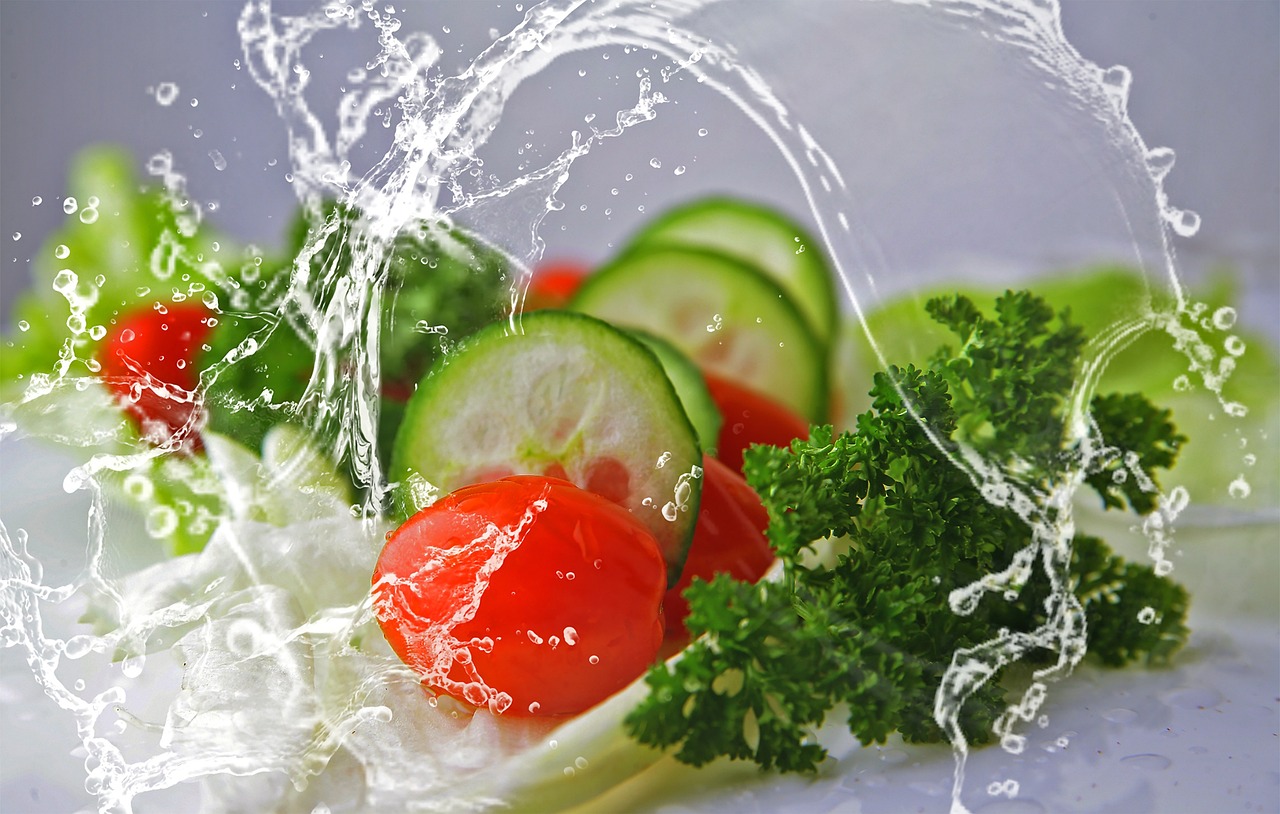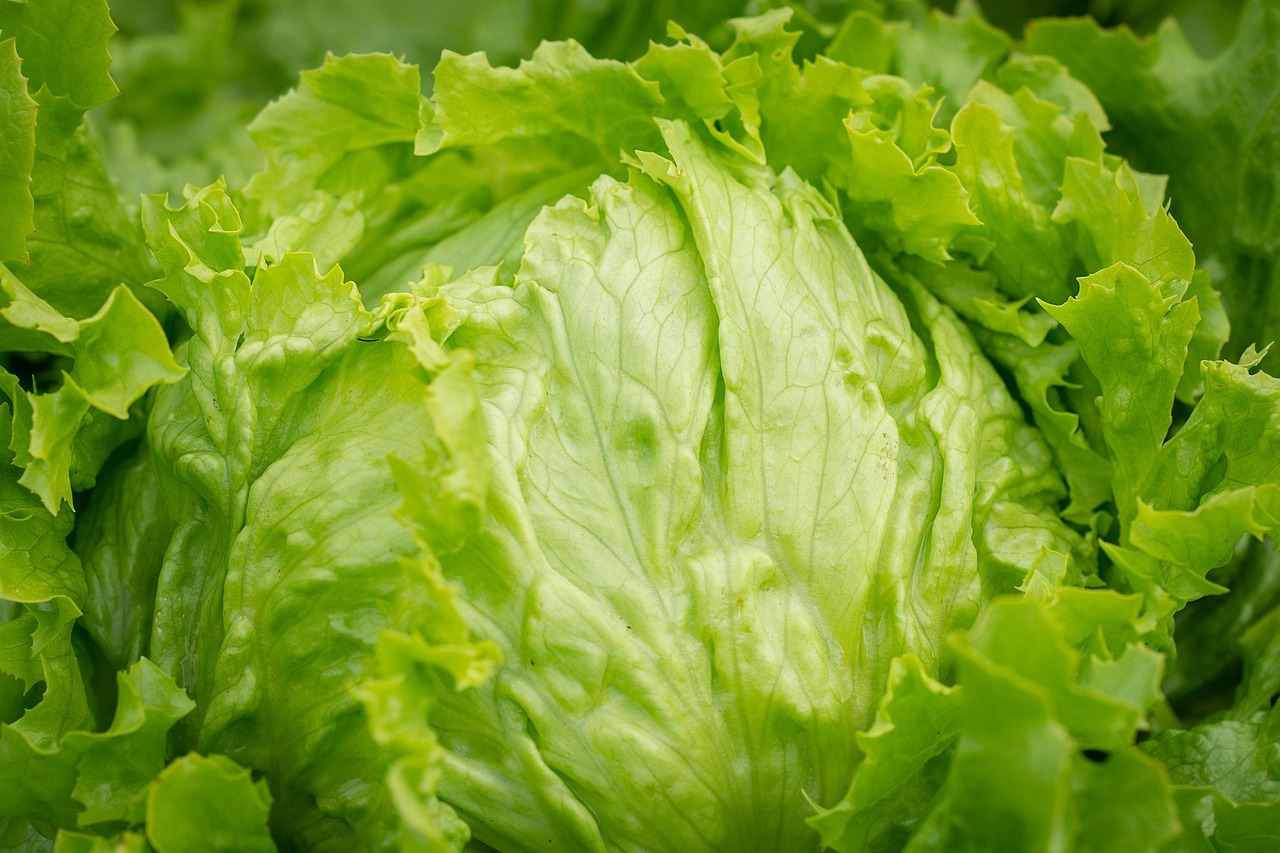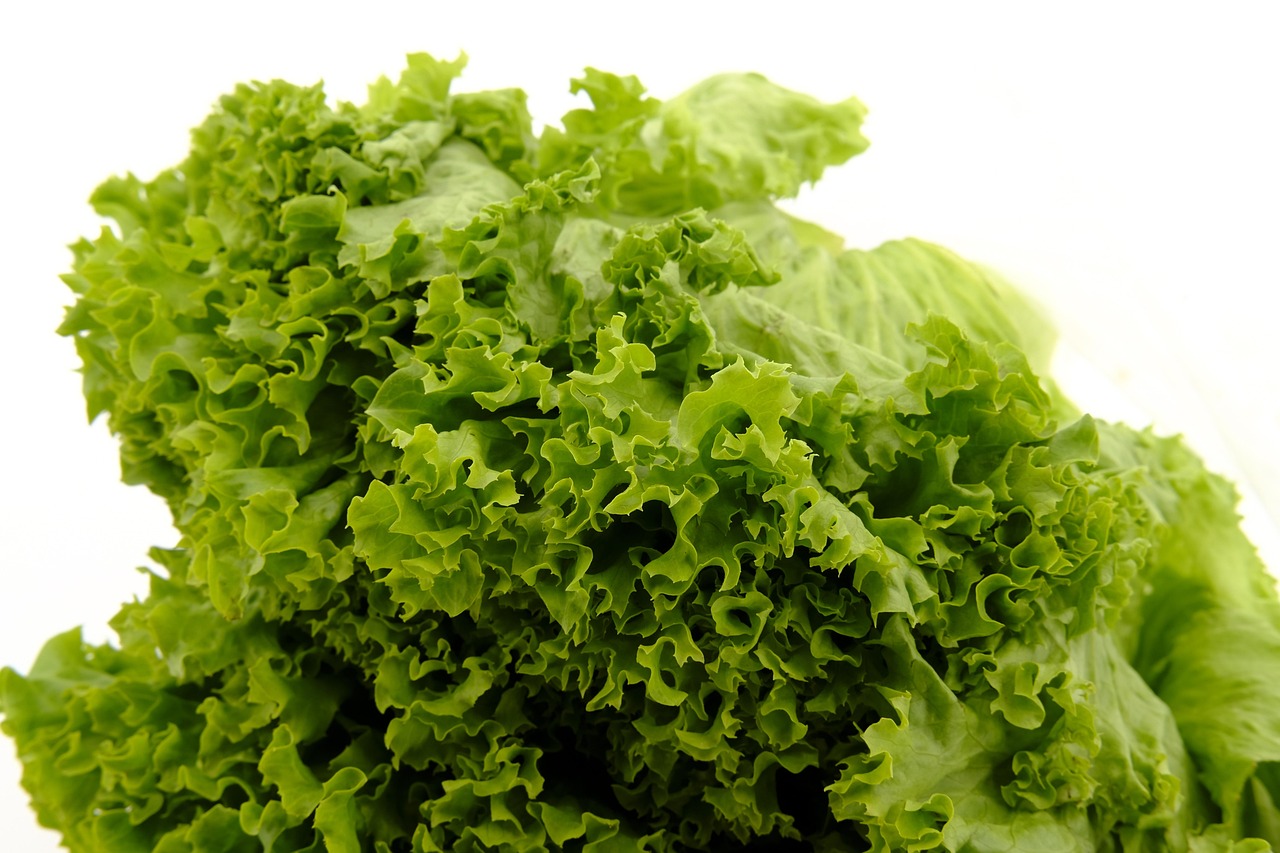Buttercrunch lettuce is a variety of butterhead lettuce known for its tender, buttery leaves and crisp texture. It is easy to grow and thrives in cooler temperatures, making it a popular choice for home gardeners.
Understanding Buttercrunch Lettuce
Buttercrunch lettuce, scientifically known as Lactuca sativa, is favored for its sweet flavor and delightful crunch. This lettuce variety belongs to the butterhead group, characterized by its broad, soft leaves that form a loose head. Unlike romaine or crisphead varieties, Buttercrunch has a more delicate and tender texture, which makes it perfect for salads and sandwiches.

Gardeners appreciate Buttercrunch lettuce not only for its taste but also for its versatility. It can be grown in various climates, although it prefers cooler weather. When planted in the right conditions, Buttercrunch can yield abundant harvests throughout the growing season.
Key Characteristics of Buttercrunch Lettuce
Buttercrunch lettuce has several distinctive characteristics that set it apart from other types of lettuce. Here are some key points:
- Tender Leaves: The leaves are soft and tender, providing a unique mouthfeel.
- Sweet Flavor: It has a mild, sweet taste that enhances salads and wraps.
- Compact Head: Buttercrunch forms a compact head that is easy to harvest.
- Cold Tolerance: This variety can tolerate cooler temperatures better than many others.
Nutritional Benefits
Buttercrunch lettuce is not only delicious but also packed with nutrients. It offers various health benefits, making it a great addition to a balanced diet. Below are some nutritional highlights:

| Nutrient | Amount per 100g |
|---|---|
| Calories | 15 |
| Protein | 1.4g |
| Carbohydrates | 2.9g |
| Fiber | 1.2g |
| Vitamin A | 7400 IU |
The presence of vitamins and minerals like Vitamin A supports eye health and boosts the immune system. Additionally, the low calorie count makes it an excellent choice for weight management.
How to Grow Buttercrunch Lettuce
If you’re interested in gardening, growing Buttercrunch lettuce can be a rewarding experience. Here’s a simple guide on how to cultivate this delicious variety.
Choosing the Right Location
Selecting the appropriate location is crucial for successful growth. Buttercrunch lettuce thrives in full sun to partial shade. Look for a spot in your garden that receives at least 6 hours of sunlight daily. However, in hotter climates, some afternoon shade can help prevent bolting.

Soil Preparation
The soil plays an essential role in growing healthy Buttercrunch lettuce. Aim for rich, well-draining soil with a pH level between 6.0 and 7.0. You can enhance your soil by adding organic matter like compost or aged manure. This will not only improve fertility but also enhance moisture retention.
Sowing Seeds
When you are ready to plant, you can either start seeds indoors or sow them directly in the garden. If starting indoors, plant the seeds about 4-6 weeks before the last expected frost date. For direct sowing, plant seeds about ¼ inch deep and space them 6-12 inches apart in rows.
Watering and Care
Watering is essential for maintaining healthy growth. Keep the soil consistently moist but not waterlogged. Regular watering helps prevent bitterness in the leaves while promoting tender growth. Additionally, consider applying a balanced fertilizer every few weeks to support robust development.

Pest and Disease Management
Growing Buttercrunch lettuce comes with its challenges, including pests and diseases that can affect the crop’s health. Being aware of common issues and managing them effectively is crucial for a successful harvest.
Common Pests
Several pests are attracted to Buttercrunch lettuce. Here are some of the most common ones:
- Aphids: These small insects can cause stunted growth and leaf curling. They feed on the sap of the plant.
- Slugs and Snails: These pests enjoy moist environments. They can chew through leaves, creating holes.
- Leaf Miners: The larvae of these flies burrow into the leaves, leaving unsightly trails.
- Cutworms: These caterpillars can cut young seedlings at the base, leading to plant loss.
Management Strategies
To protect your Buttercrunch lettuce from these pests, consider the following strategies:
- Regular Monitoring: Check your plants frequently for signs of pests. Early detection can help mitigate damage.
- Natural Predators: Encourage beneficial insects like ladybugs and lacewings, which prey on aphids.
- Organic Pesticides: If necessary, use organic solutions like neem oil or insecticidal soap to control infestations.
- Physical Barriers: Floating row covers can protect seedlings from pests while allowing light and water to reach them.
Disease Prevention
Diseases can also impact the growth of Buttercrunch lettuce. Here are some common diseases to watch for:
- Downy Mildew: This fungal disease thrives in cool, damp conditions and appears as yellow spots on leaves.
- Powdery Mildew: Characterized by a white powdery coating on leaves, this disease often occurs in dry, hot weather.
- Lettuce Drop: Caused by soil-borne fungi, it leads to sudden wilting and death of plants.
Disease Management Techniques
To minimize the risk of diseases, implement these management techniques:
- Crop Rotation: Avoid planting lettuce in the same location year after year to reduce soil-borne disease buildup.
- Proper Spacing: Ensure adequate spacing between plants to promote good air circulation, reducing humidity around foliage.
- Watering Practices: Water at the base of the plants in the morning to allow foliage to dry quickly, reducing disease risk.
- Fungicides: In severe cases, consider using approved fungicides as a preventive measure or treatment against fungal diseases.
Harvesting Buttercrunch Lettuce
Knowing when and how to harvest Buttercrunch lettuce is essential for enjoying its best flavor and texture. Proper harvesting techniques can ensure that you get the best quality lettuce from your garden.
When to Harvest
Buttercrunch lettuce is typically ready for harvest about 60 days after planting. Look for the following signs to determine when to harvest:
- The head should feel firm but not overly tight.
- The leaves should be vibrant green without signs of yellowing or wilting.
- The leaves should measure about 6-8 inches long for optimal size and flavor.
Harvesting Techniques
There are two main methods for harvesting Buttercrunch lettuce:
- Cutting Heads: Use a sharp knife to cut the head off at the base. This method allows you to harvest the entire head at once.
- Leaf Harvesting: For a continuous supply, pick outer leaves as they mature. This allows the inner leaves to continue growing for future harvests.
Post-Harvest Care
After harvesting, it’s important to handle Buttercrunch lettuce properly to maintain its quality:
- Cooling: Immediately place harvested lettuce in a cool area or refrigerate it to preserve freshness.
- Washing: Gently rinse the leaves under cool water to remove any dirt or pests before consumption.
- Storage: Store in a plastic bag or container in the refrigerator crisper drawer for up to one week.
By following these practices, you can enjoy fresh, delicious Buttercrunch lettuce straight from your garden. The right care and attention will ensure you have a bountiful harvest throughout the growing season.
Cooking and Using Buttercrunch Lettuce
Buttercrunch lettuce is a versatile ingredient that can enhance various dishes. Its tender leaves and mild flavor make it a favorite among chefs and home cooks alike. This section explores different ways to incorporate Buttercrunch lettuce into your meals.
Salads
One of the most popular uses for Buttercrunch lettuce is in salads. Its crisp texture pairs well with a variety of ingredients. Here are some delicious salad ideas:
- Classic Garden Salad: Combine Buttercrunch lettuce with tomatoes, cucumbers, carrots, and your favorite dressing.
- Caesar Salad: Use Buttercrunch as the base for this classic, adding croutons, Parmesan cheese, and Caesar dressing.
- Asian-Inspired Salad: Toss Buttercrunch with shredded cabbage, carrots, and a sesame dressing for a refreshing side.
Wraps and Sandwiches
Buttercrunch lettuce is also perfect for wraps and sandwiches. Its sturdy leaves can hold fillings without tearing. Consider these ideas:
- Lettuce Wraps: Use whole leaves to wrap grilled chicken, shrimp, or tofu with sliced vegetables and sauce.
- Sandwiches: Layer Buttercrunch lettuce in sandwiches to add crunch and freshness. It pairs well with turkey, ham, or veggie options.
- Tacos: Replace tortillas with Buttercrunch leaves for a low-carb taco option filled with your choice of protein and toppings.
Cooking with Buttercrunch Lettuce
While most often used raw, Buttercrunch lettuce can also be cooked. Here are some ways to incorporate it into hot dishes:
- Sautéed Lettuce: Quickly sauté Buttercrunch with garlic and olive oil for a simple side dish.
- Soups: Add chopped Buttercrunch to soups during the last few minutes of cooking for added texture and nutrition.
- Stir-Fries: Toss in Buttercrunch at the end of cooking to retain its crispness and flavor.
Nutritional Value of Buttercrunch Lettuce
Buttercrunch lettuce is not only delicious but also offers numerous health benefits. It is low in calories and provides essential nutrients. Here is a breakdown of its nutritional value:
| Nutrient | Amount per 100g |
|---|---|
| Calories | 15 |
| Carbohydrates | 2.9g |
| Dietary Fiber | 1.2g |
| Sugars | 0.8g |
| Protein | 1.4g |
| Vitamin A | 7400 IU |
| Vitamin K | 126 mcg |
The high content of Vitamin A supports eye health, while Vitamin K is vital for bone health and blood clotting. The dietary fiber in Buttercrunch helps with digestion, making it a beneficial addition to any diet.
Culinary Tips for Using Buttercrunch Lettuce
To maximize the flavor and texture of Buttercrunch lettuce, consider these culinary tips:
- Freshness is Key: Use freshly harvested Buttercrunch for the best taste. Look for vibrant green leaves without blemishes.
- Avoid Over-Dressing: When making salads, use just enough dressing to enhance the flavor without overpowering the delicate leaves.
- Add Crunch: Combine with other crunchy vegetables like radishes or bell peppers to create textural contrast in salads or wraps.
- Pairing Flavors: Buttercrunch pairs well with ingredients like citrus fruits, avocados, nuts, and cheeses to create balanced dishes.
Storage Tips for Buttercrunch Lettuce
If you have leftover Buttercrunch lettuce, proper storage is essential to maintain its freshness. Here are some tips:
- Avoid Moisture: Excess moisture can cause leaves to wilt or rot. Ensure they are dry before storing.
- Use Produce Bags: Store in perforated plastic bags to allow airflow while retaining some humidity.
- Keep in Crisper Drawer: Store Buttercrunch in the crisper drawer of your refrigerator for optimal freshness.
- Avoid Ethylene Gas: Keep away from fruits like apples and bananas that emit ethylene gas, which can speed up spoilage.
By following these storage tips, you can extend the shelf life of your Buttercrunch lettuce and ensure it remains crisp and tasty for longer periods.
Common Growing Mistakes to Avoid
While growing Buttercrunch lettuce can be a rewarding experience, there are common mistakes that gardeners often make. Understanding these pitfalls can help ensure a successful harvest.
- Overcrowding: Planting too many seeds in a small area can lead to competition for resources, resulting in stunted growth. Ensure proper spacing between plants to promote healthy development.
- Ignoring Weather Conditions: Buttercrunch lettuce thrives in cooler temperatures. Planting too late in the season can lead to bolting, where the plant goes to seed prematurely. Monitor local weather forecasts to time your planting correctly.
- Neglecting Soil Quality: Using poor-quality soil can stunt growth. Regularly amend your soil with organic matter and ensure proper drainage to maintain nutrient levels.
- Inconsistent Watering: Irregular watering can lead to issues like bitterness in the leaves or wilting. Develop a consistent watering schedule that keeps the soil evenly moist.
Companion Planting for Buttercrunch Lettuce
Companion planting is a gardening technique that involves planting different crops in proximity for mutual benefit. Certain plants can enhance the growth of Buttercrunch lettuce while repelling pests.
- Radishes: These quick-growing plants can help deter pests like aphids and also break up the soil.
- Carrots: Both plants have different root structures, allowing them to thrive without competing for nutrients.
- Herbs: Basil and dill can enhance the flavor of lettuce while attracting beneficial insects.
By incorporating companion plants into your garden, you can create a more diverse ecosystem that supports healthy growth and reduces pest issues.
Buttercrunch Lettuce Varieties
While Buttercrunch is a popular variety, several cultivars exist, each with unique characteristics. Here are a few notable ones:
- Buttercrunch Romaine: A hybrid variety that combines the crispness of romaine with the tenderness of Buttercrunch. It has a slightly more upright growth habit.
- Butterhead Mix: A blend of various butterhead types, offering different colors and textures while maintaining that sweet, buttery flavor.
- Red Buttercrunch: This variety features reddish leaves while maintaining the same tender texture and taste as traditional Buttercrunch.
Experimenting with different varieties can add diversity to your garden and meals, allowing you to enjoy various flavors and textures.
Final Thoughts
Buttercrunch lettuce is an excellent choice for home gardeners seeking a flavorful and easy-to-grow vegetable. Its tender leaves and mild flavor make it a versatile ingredient in many dishes. By following best practices for planting, care, and harvesting, you can enjoy a bountiful supply of this delightful lettuce variety.
Remember to monitor for pests and diseases, obtain proper storage techniques, and explore creative culinary uses to get the most out of your Buttercrunch lettuce. As you expand your gardening knowledge and experience, you’ll find that Buttercrunch not only enhances your meals but also brings joy to your gardening journey.
Your efforts in growing Buttercrunch lettuce will undoubtedly yield delicious rewards, keeping your table fresh and vibrant with homegrown goodness throughout the growing season. Happy gardening!
